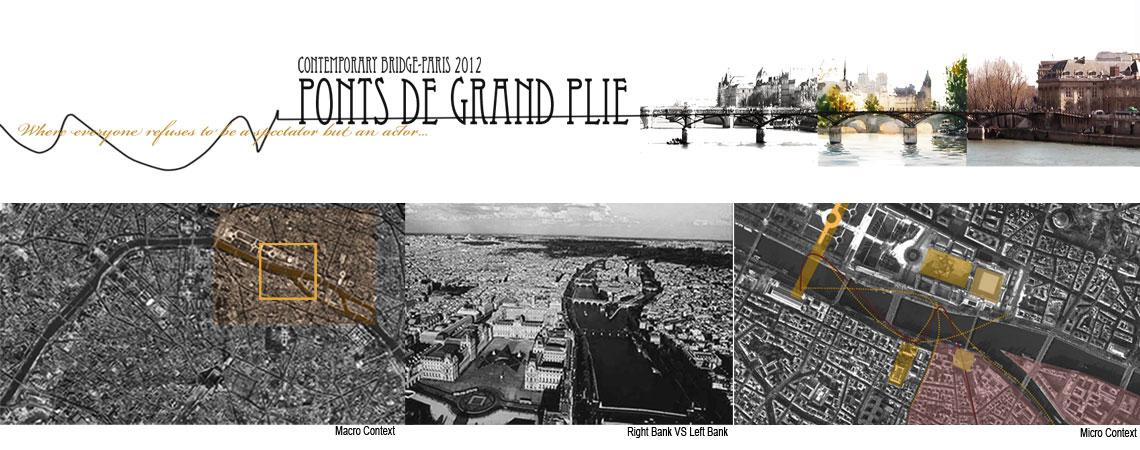
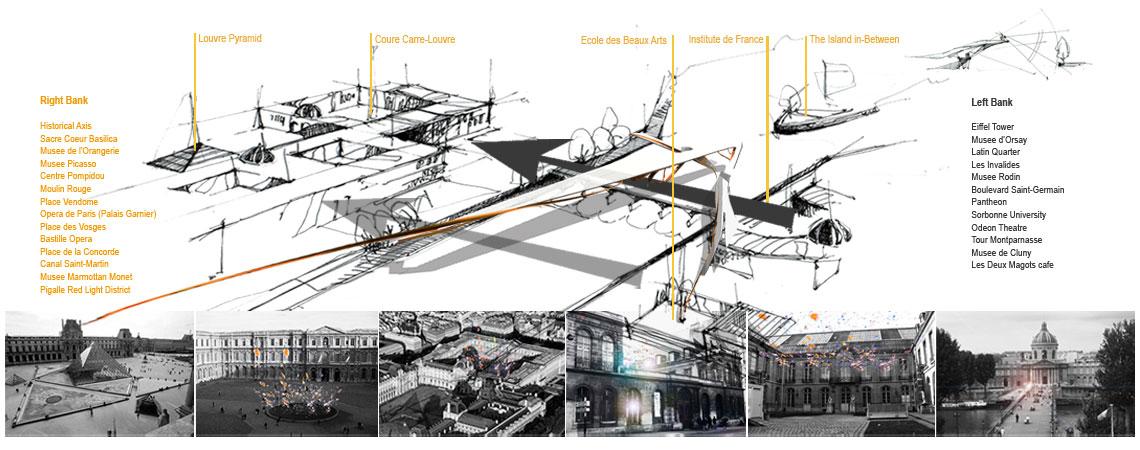
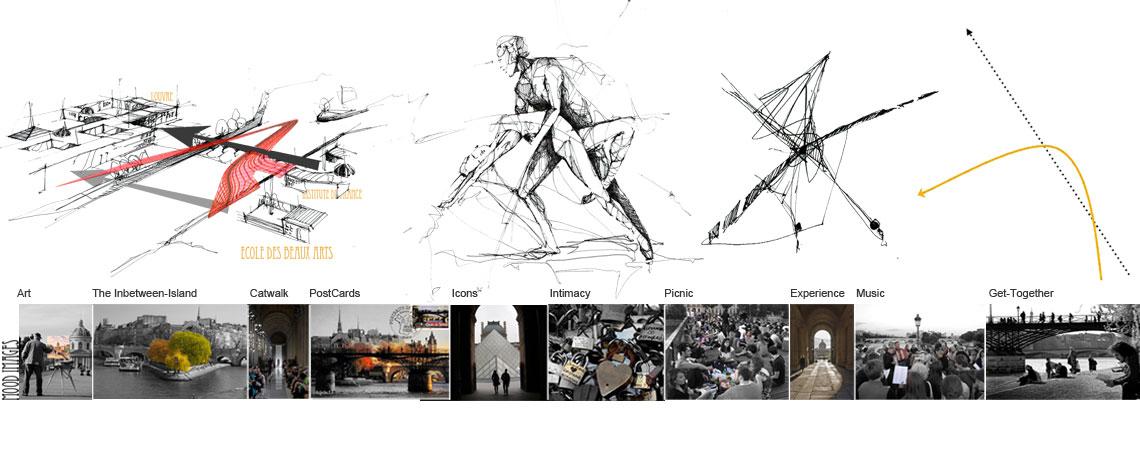

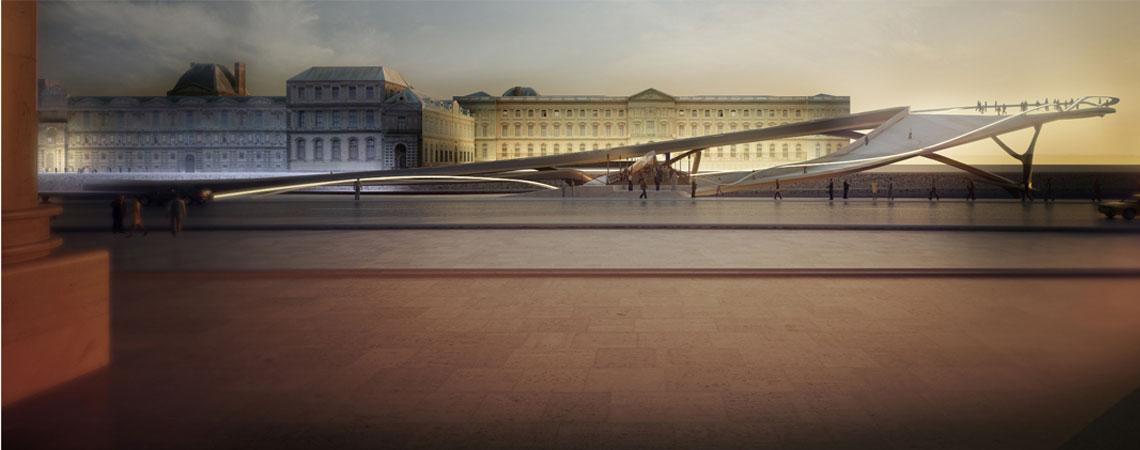
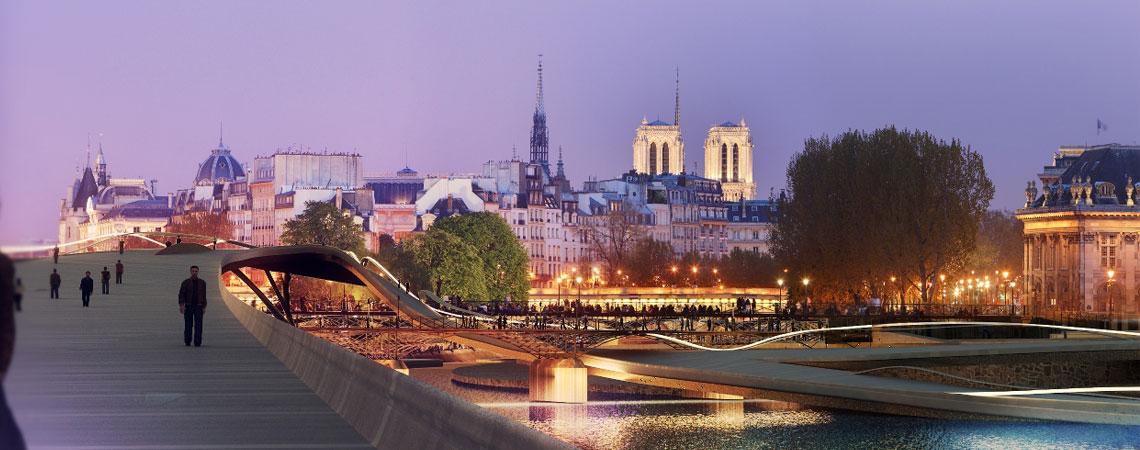
“Our proposed bridge will not only link the two banks of the seine river but will also provide a unique experience for the Parisians and their visitors, located in the middle of the romantic city, the center of enlightenment, arts, culture and fashion, all merged in the city’s peaceful alleyways and golden nights”.
After thorough analysis for the city Paris on an urban, architectural, cultural and social level, 37 bridges were studied, most of which are used for vehicles, five dedicated for pedestrian use and 2 incorporate railway connection between the left and right bank of the Seine river. The left bank called “la rive gauche” used to be known as the artistic side of the city, very cultural and poetic however chaotic in nature while the right bank is more dense and in order, business oriented and contains major touristic attractions. Important features on site are the historical monument ‘Musee du Louver’ On the right bank, the famous Notre dame de Paris situated on a small island in-between the two banks, The Institute de France, and Ecole des beaux arts on the left bank, none of which seem to be visually nor physically, successfully connected.
The bridge proposed seeks to seamlessly connect the important architectural landmarks on site, enhance views out between two banks and the island in-between as well as create an active and inviting icon within the context’s rich cultural and artistic presence. Paris known for ‘the city of romance’ inspires the design in which the connection mentioned is a choreographed structural installation that wraps around the existing ‘Pont des arts’ keeping traces of its existence visible, while complementing its presence.



